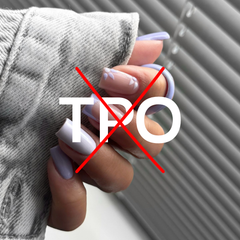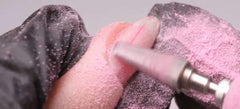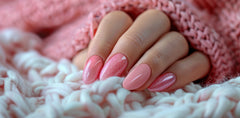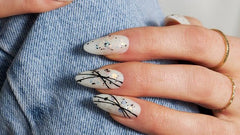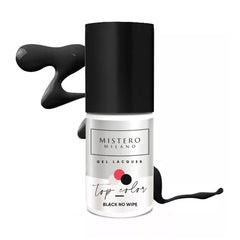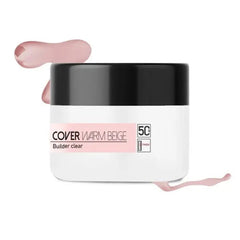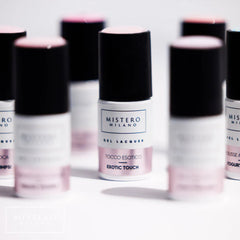Acrylic
Amber D'Halluin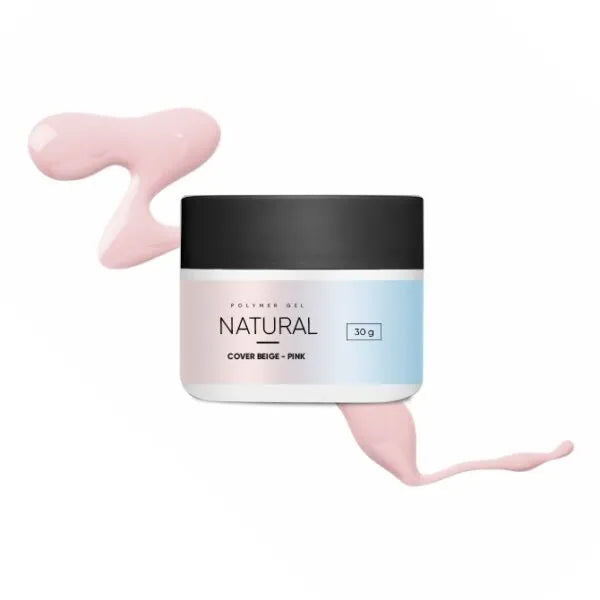
1. What are acrylic nails?
Acrylic nails are made by combining acrylic liquid (monomer) and acrylic powder (polymer). Mixing these two substances results in a thick mass (acrylic mass), which can easily be modeled into the desired shape. The curing process begins immediately after mixing the substances, so you only have a short period of time to shape the nails before they harden.
The special thing about acrylic nails is that they do not need a nail lamp to harden. The hardening is done by a chemical reaction between the liquid and the acrylic powder. However, it does take 48 hours for the nails to harden completely.
2. What are the pros and cons of acrylic nails?
2.1 Advantages
- Acrylic nails stay beautiful on the nails for 4-5 weeks.
- Because acrylic is removable, the artificial nails are easier to remove.
- Acrylic is hard and strong. This gives the artificial nails good durability
2.2 Disadvantages
- Some chemicals used in acrylic liquid cause a very intense and unpleasant odor during application.
- Acrylic nails sometimes look less natural than gel, polygel or gel polish nails.
- Acrylic dries quickly, which can sometimes make it difficult to shape the nails correctly.
3. How long do acrylic nails last?
In general, acrylic nails will stay on your nails for about 4-5 weeks, depending on your own nail growth and the specific manicure you have chosen. If you have chosen a natural color, the growth of your nails will be less noticeable than if you have chosen bright colors. After 4-5 weeks, you can choose to keep your manicure and have touch-ups done or to completely change your manicure.
4. Is acrylic bad for the natural nail?
Acrylic nails are definitely not bad for your natural nail plate. To prevent damage, it is important to apply and remove acrylic nails correctly. When you remove the acrylic nails, your natural nails may feel a bit more flexible for 12-24 hours. This is because artificial nails increase the moisture content in the natural nail plate by 10-15%.
Artificial nails made with Methyl Methacrylate Monomer (MMA) products require caution when removing them. Although this substance is not dangerous in itself, it is a very harsh substance that increases the risk of damage to your natural nails when removing artificial nails. In addition, with this substance, it is often necessary to file the natural nail plate too hard to ensure that the product adheres sufficiently, which can cause your nail plate to become too thin.
5. What supplies do you need for an acrylic manicure?
Performing an acrylic manicure requires several supplies. To begin, you will need to prepare your natural nail plate with various nail tools, such as a cuticle pusher , cuticle nippers , file ,… Then you have a acrylic brush , dappendish pot , nail prep , primer , base coat , acrylic powder, acrylic liquid , possibly a gel polish color and a top coat necessary.
Unlike some other manicure techniques, you don’t need a nail lamp to cure acrylic nails. Acrylic dries naturally, although it can take up to 48 hours for your acrylic nails to fully cure.
6. Which file can/should be used for acrylic nails?
For filing, shaping or removing acrylic nails it is recommended to use a 80/100 file to use. This file has two different grits, each with a specific purpose.
The grit 80 side is used to file hard materials such as acrylic mass into shape. The grit 100 side is suitable for removing artificial nails or leveling the acrylic mass. However, it is strongly advised not to use the 80/100 file on your natural nail plate, as this can cause serious damage.
7. How to apply, touch up and remove acrylic nails?
In order to prevent damage to your natural nail plate, it is essential to apply, fill in, and remove your acrylic nails correctly. Unfortunately, in the nail industry, mistakes are often made with these procedures, and this is often due to the lack of training or poor education. If a manicure is not performed, filled in, or removed correctly, it can cause damage to the nail matrix, which can lead to irregularities in the nail plate that are sometimes irreparable.
8. Can acrylic powder and liquid change brands?
It is strongly discouraged to combine acrylic powder (polymer) with another brand of acrylic liquid (monomer). Acrylic powder is specifically designed to work with its liquid. The amount of benzoyl peroxide in the acrylic powder can vary and this can affect the curing process when combined with another liquid.
If there is too little benzoyl peroxide present, the curing will be incomplete. This can lead to skin reactions that can cause a contact allergy after repeated exposure. If there is too much benzoyl peroxide present, there will be over-curing. This can lead to discoloration, overheating and brittleness of the nails. That is why it is important to always use acrylic powder and acrylic liquid from the same brand.
9. How can you get the right ratio of acrylic powder and liquid?
Finding the right ratio of acrylic powder to acrylic liquid is a challenge that requires a lot of practice and experience. The ideal ratio is 1.5 parts liquid to 1 part acrylic powder. Applying the right amount of acrylic powder requires a lot of training and expertise. Over time, you will be able to determine the right ratio yourself. If the ratio is not correct, it can lead to nails that cure too much or too little.
10. How long does acrylic powder last?
The shelf life of acrylic powder depends on how you store it. Temperature and exposure to light have a major influence on the quality of the acrylic liquid and powder. To keep the acrylic powder good for as long as possible, it is important to always keep the jar tightly closed and store it in a dry and dark place. The ideal temperature for storing acrylic powder is between 15 and 20°C. Also note that most brands indicate an expiration date on their acrylic products.
11. Can you combine acrylic with gel polish, gel or acrylic gel?
Acrylic can only be combined with gel polish, because gel or polygel each have a thick consistency and their own elasticity. On the other hand, gel polish has a liquid consistency and can therefore be combined with gel, polygel or acrylic. This allows you to use a gel polish base, color and top coat in combination with acrylic. However, if you combine acrylic with gel or polygel, the durability of your manicure will be greatly reduced, as this can lead to premature peeling.
12. Swimming with acrylic nails
It is safe to swim with acrylic nails, it will not damage your manicure. However, if your artificial nails come into contact with chlorine in the water for a long time, discoloration may occur.







